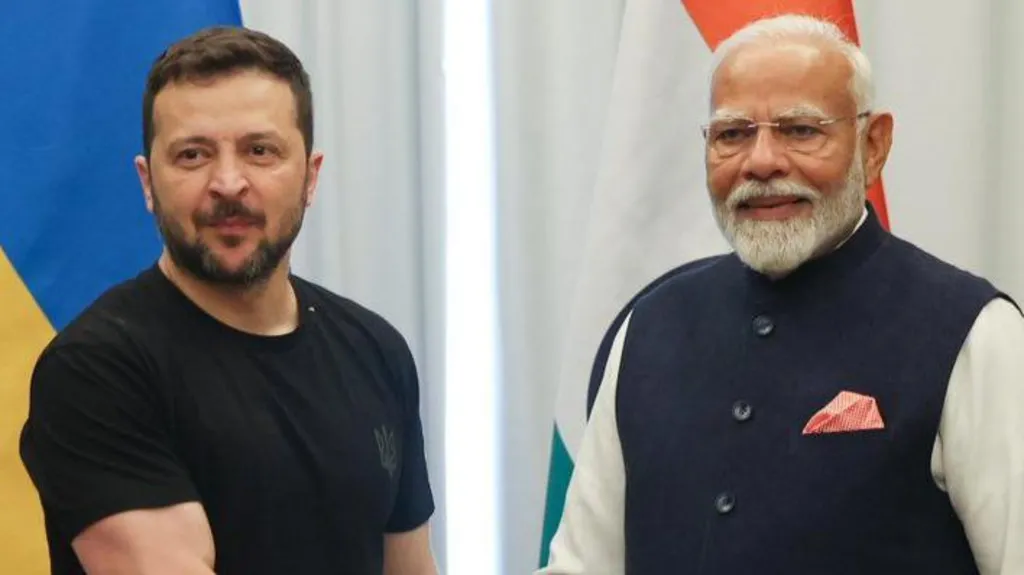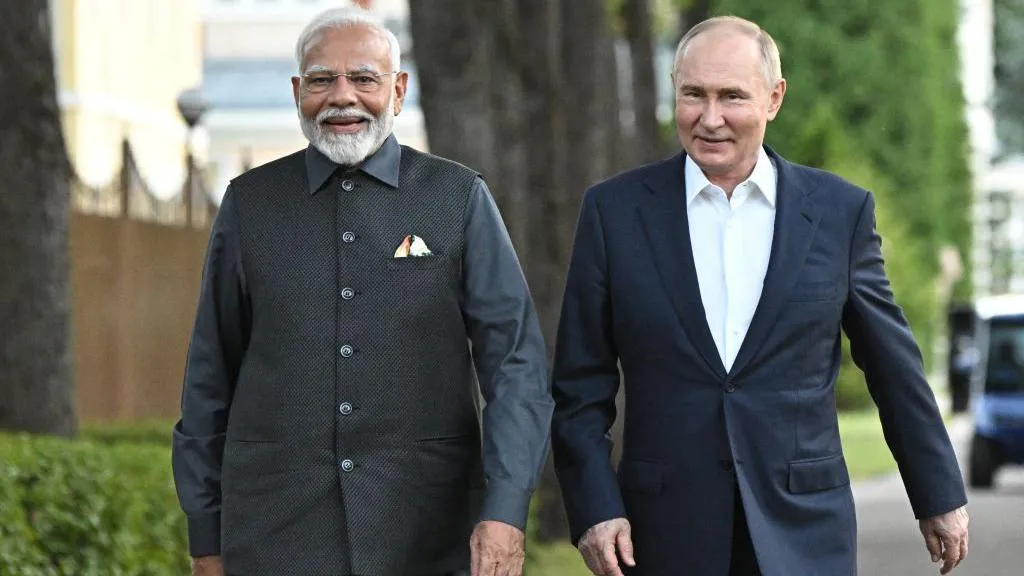
Indian Prime Minister Narendra Modi visited Ukraine on Friday to engage in talks with President Volodymyr Zelensky. This visit comes just weeks after Modi’s controversial meeting with Russian President Vladimir Putin in Moscow, which drew sharp reactions from Kyiv and several Western capitals. The timing of this visit raises an important question: Is Modi’s trip to Kyiv an attempt to placate Zelensky and Western leaders? The answer, however, is more nuanced.
India has a long-standing tradition of non-alignment, a diplomatic approach that allows it to maintain relations with competing global powers without leaning too heavily towards any side. Modi’s visit to Ukraine, the first by an Indian prime minister, is less about appeasing the West and more about reasserting India’s strategic autonomy. It signals that while India will continue to foster its strong relationship with Russia, it remains committed to engaging with Western nations.

Balancing Relations with Russia and the West
Modi’s visit is emblematic of India’s careful balancing act between two conflicting interests: maintaining its historical ties with Russia and strengthening its growing partnership with Western powers. Michael Kugelman, director of the South Asia Institute at the Wilson Centre in Washington, aptly notes that this trip is about advancing Indian interests by reasserting its friendship with Ukraine and conveying its concerns over the ongoing war.
India’s diplomatic stance has often been one of restraint. While it has avoided directly criticizing Russia for its actions in Ukraine, Delhi has consistently emphasized the importance of respecting territorial integrity and sovereignty. Modi’s visit to Moscow in July, which coincided with a tragic bombing in Ukraine that claimed the lives of 41 people, including children, drew global condemnation. However, Modi stopped short of blaming Russia, reflecting India’s delicate diplomatic position.

The West’s Perspective and Strategic Calculations
Western nations have often been frustrated by India’s reluctance to take a firmer stance against Russia. However, they also recognize the complexities of India’s geopolitical strategy. India remains the world’s largest importer of arms, with over 50% of its defense equipment sourced from Russia. While India has diversified its defense portfolio and increased domestic manufacturing, its reliance on Russian military equipment remains significant. Additionally, India has ramped up its oil imports from Russia, benefiting from the lower prices Moscow offers.
The United States and its allies, while eager for India to take a clearer stand on the war, have avoided applying harsh sanctions. The West views India as a critical counterbalance to China, making it crucial to maintain strong ties with Delhi. Eric Garcetti, the US ambassador to India, recently emphasized the importance of not taking the US-India relationship for granted.
What’s Next for India’s Global Role?
Modi’s visit to Ukraine is likely to be welcomed by Western leaders as a sign of India’s willingness to engage with all sides. It sends a message that India is not leaning so closely towards Moscow that its relationship with Kyiv and the West is beyond repair. This is crucial as India continues to build stronger ties with the US and other Western nations.
There has been speculation that Modi might position himself as a peacemaker in the ongoing conflict, given India’s close relations with both Russia and the West. However, this seems unlikely at the current juncture. India typically refrains from mediating in international conflicts unless invited by all parties involved, and there is little indication that Russia and Ukraine are seeking such mediation.
In conclusion, Narendra Modi’s visit to Ukraine is a calculated move in India’s broader strategy of maintaining its strategic autonomy while balancing its relationships with global powers. It reflects India’s nuanced approach to diplomacy, one that prioritizes its national interests while remaining engaged with both Russia and the West.